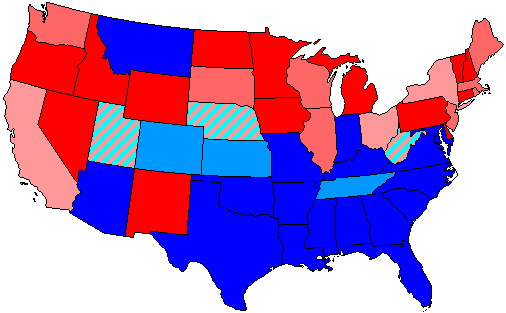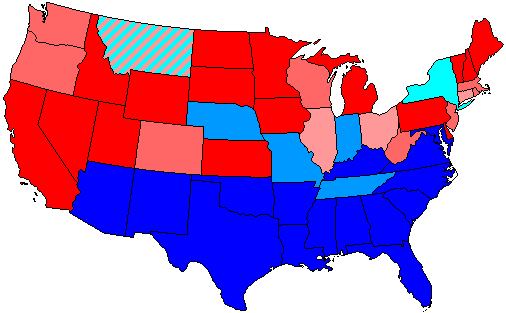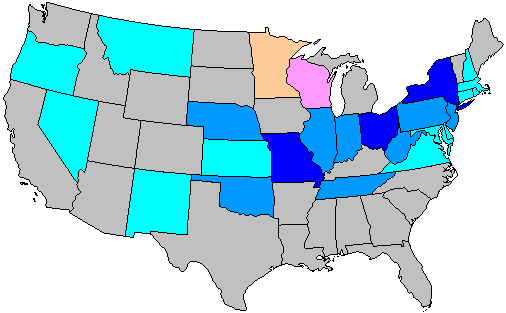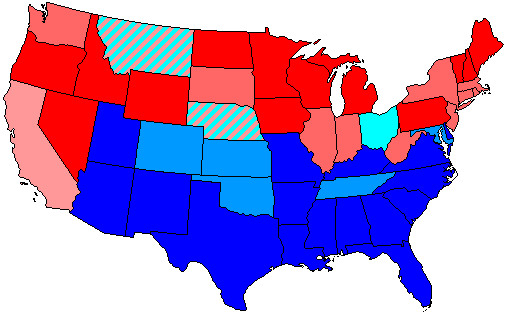|
Kansas's 8th Congressional District
Kansas's 8th congressional district for the United States House of Representatives was a congressional district in the state of Kansas. It was created in 1903, and it existed until 1933. William Augustus Ayres was the final person to represent the district before he was redistricted to the now-defunct 5th congressional district. Throughout its history it only had 3 representatives. List of members representing the district References * * Congressional Biographical Directory of the United States 1774–present {{coord missing, Kansas 08 Former congressional districts of the United States ... [...More Info...] [...Related Items...] OR: [Wikipedia] [Google] [Baidu] |
United States House Of Representatives
The United States House of Representatives, often referred to as the House of Representatives, the U.S. House, or simply the House, is the lower chamber of the United States Congress, with the Senate being the upper chamber. Together they comprise the national bicameral legislature of the United States. The House's composition was established by Article One of the United States Constitution. The House is composed of representatives who, pursuant to the Uniform Congressional District Act, sit in single member congressional districts allocated to each state on a basis of population as measured by the United States Census, with each district having one representative, provided that each state is entitled to at least one. Since its inception in 1789, all representatives have been directly elected, although universal suffrage did not come to effect until after the passage of the 19th Amendment and the Civil Rights Movement. Since 1913, the number of voting representat ... [...More Info...] [...Related Items...] OR: [Wikipedia] [Google] [Baidu] |
1914 United States House Of Representatives Elections In Kansas
1914 United States House of Representatives elections were held in the middle of President Woodrow Wilson's first term. The opposition Republican Party had recovered from the split they underwent during the 1912 presidential election, and the party gained more than 60 seats from the Democratic Party, though not enough to regain control of the body. The burgeoning economy greatly aided Republicans, who pushed for pro-business principles and took credit for the success that had been reached in the industrial sector. Many progressive Republicans rejoined the Republican Party, but six remained under the Progressive Party banner in the new Congress. In addition, William Kent was re-elected in as an independent, and two minor party candidates were elected: Charles H. Randall, a Prohibition Party member, in ; and Meyer London, a Socialist Party member, in . Election summaries Early election date Maine held its elections early, on September 14, 1914. There had previously bee ... [...More Info...] [...Related Items...] OR: [Wikipedia] [Google] [Baidu] |
1930 United States House Of Representatives Elections In Kansas
The 1930 United States House of Representatives elections was an election for the United States House of Representatives in 1930 which occurred in the middle of President Herbert Hoover's term. During the election cycle, the nation was entering its second year of the Great Depression, and Hoover was perceived as doing little to solve the crisis, with his personal popularity being very low. His Republican Party was initially applauded for instituting protectionist economic policies, which were intended to limit imports to stimulate the domestic market: however, after the passage of the heavily damaging Smoot-Hawley Tariff, a policy that was bitterly opposed by the Democratic Party, public opinion turned sharply against Republican policies, and the party bore the blame for the economic collapse. While the Democrats gained 52 seats in the 1930 midterm elections, Republicans retained a narrow one-seat majority of 218 seats after the polls closed versus the Democrats' 216 seats ... [...More Info...] [...Related Items...] OR: [Wikipedia] [Google] [Baidu] |
1928 United States House Of Representatives Elections In Kansas
The 1928 United States House of Representatives elections was an election for the United States House of Representatives in 1928 which coincided with the election of President Herbert Hoover. The strength of the U.S. economy resulted in Hoover's Republican Party victory in the election, helping them to scoop up 32 House seats, almost all from the opposition Democratic Party, thus increasing their majority. The big business-supported wing of the Republican Party continued to cement control. Republican gains proved even larger than anticipated during this election cycle, as an internal party feud over the Prohibition issue weakened Democratic standing. Losses of several rural, Protestant Democratic seats can be somewhat linked to anti-Catholic sentiments directed toward the party's presidential candidate, Al Smith. However, this would be the last time for 68 years that a Republican House was re-elected. Results summary SourceElection Statistics - Office of the Clerk S ... [...More Info...] [...Related Items...] OR: [Wikipedia] [Google] [Baidu] |
1926 United States House Of Representatives Elections In Kansas
The 1926 United States House of Representatives elections was an election for the United States House of Representatives in 1926 which occurred in the middle of President of the United States, President Calvin Coolidge's second term. Coolidge's United States Republican Party, Republican Party lost seats to the opposition United States Democratic Party, Democratic Party, but it retained a majority. The most pressing national matters at the time were fragmented, generally related to government's relationship to business or to providing social aid. However, no predominant issue was able to cast a shadow over the election. The small, populist Farmer–Labor Party also held two seats following the election. Overall results Source: Special elections Elections are listed by date and district. , - ! , John E. Raker , , Democratic , 1910 United States House of Representatives elections in California, 1910 , , Incumbent died January 22, 1926.New member elected Augus ... [...More Info...] [...Related Items...] OR: [Wikipedia] [Google] [Baidu] |
1924 United States House Of Representatives Elections In Kansas
The 1924 United States House of Representatives elections was an election for the United States House of Representatives in 1924 which coincided with the election to a full term of President Calvin Coolidge, who had replaced Warren Harding following his death. Coolidge's popularity helped his Republican Party to gain a net 22 seats from the opposition Democratic Party, cementing their majority. The burgeoning economy and Republican pro-business policies caused the party to gain popularity. An internal split somewhat reduced House gains, as a progressive faction of the party continued to antagonize party leadership. In the early stages of the election, there were fears that the Republicans would be swamped at the polls due to several scandals in the administration of President Warren Harding. However, after the chief executive's death, his incidents were painted as personal problems that did not reflect the state of the party. The populist Farmer–Labor Party also gained a seat ... [...More Info...] [...Related Items...] OR: [Wikipedia] [Google] [Baidu] |
1922 United States House Of Representatives Elections In Kansas
The 1922 United States House of Representatives elections were held for the United States House of Representatives in November 1922, in the middle of President Warren G. Harding's term. Just as voters had expressed their distrust of Wilson in 1920, now voters had a chance to express the widespread feeling that Congress had failed to address economic problems, especially the brief but sharp economic recession of 1921–1922. Most of the seats that Republicans lost had long been held by Democrats, who now returned with an even stronger base in the major cities. The Republican Party lost a net of 77 seats to the opposition Democratic Party. The Republicans were neither unified nor well led, and they could boast of very few successes except tax cuts for the wealthy and for corporations, and higher tariffs that pleased manufacturing interest but raised consumer prices. With Senator Bob La Follette as their unofficial leader, some progressives formed a small but highly vocal group on ... [...More Info...] [...Related Items...] OR: [Wikipedia] [Google] [Baidu] |
1920 United States House Of Representatives Elections In Kansas
The 1920 United States House of Representatives elections were held, coinciding with the election of President Warren G. Harding, the first time that women in all states were allowed to vote in federal elections after the passage of the 19th Amendment. The incumbent Democratic administration of Woodrow Wilson lost popularity after the conclusion of World War I in 1918, as American voters hoped to return to isolationism and avoid military conflict in the future. Heedless of the prevailing national mood, Wilson advocated American leadership in a new international order under the League of Nations, alienated voters of German and Irish ancestry, and constantly struggled with a Congress controlled by the opposition Republican Party. Harding and the Republicans promised a new start for the nation and a disassociation from Europe's political troubles that most voters found appealing. As a result, the Republicans picked up 63 seats in the House of Representatives, with most of the gai ... [...More Info...] [...Related Items...] OR: [Wikipedia] [Google] [Baidu] |
Richard Ely Bird
Richard Ely Bird (November 4, 1878 – January 10, 1955) was a Republican member of the United States House of Representatives for the 8th District of Kansas from 1921 to 1923. Bird was born in Cincinnati, Ohio on November 4, 1878. He moved with his parents to Wichita, Kansas in 1887 and attended the public schools there. He was graduated from Wichita High School in 1898. Bird later studied law and was admitted to the Kansas bar in 1901. He opened his legal practice in Wichita. In 1916 he became a judge of the district court of the 18th Judicial District of Kansas and was serving in that capacity when elected to congress during the Warren G. Harding presidential landslide of 1920. Bird unseated incumbent Democratic Congressman William Ayres by a narrow margin of 30,076 (49.4%) to 29,899 (49.1%). Bird's victory meant that all eight Kansas congressional districts would be represented by Republicans. Rep. Bird would lose his reelection bid in 1922 by a margin of 37,581 (62%) to 2 ... [...More Info...] [...Related Items...] OR: [Wikipedia] [Google] [Baidu] |
1918 United States House Of Representatives Elections In Kansas
The 1918 United States House of Representatives elections were held November 5, 1918, which occurred in the middle of President Woodrow Wilson's second term. With the country in World War I (contrary to previous promises by Wilson), and Wilson's personal popularity ebbing, the Republicans gained 25 seats and took over control of the House from Wilson's Democrats. Internal divide among Democratic leadership over aspects related to payment of the war also decreased the unity of the party, which had been the organization's strength during the decade. The Progressive Party also disappeared, with its former members generally becoming Democrats. Minnesota's Farmer–Labor Party, a descendant of populism, also gained its very first seat. Frederick H. Gillett (R-Massachusetts) became Speaker, and previous speaker Champ Clark (D-Missouri) became Minority Leader. Background Woodrow Wilson was elected to the presidency in the 1912 presidential election and his victory in the 1916 ele ... [...More Info...] [...Related Items...] OR: [Wikipedia] [Google] [Baidu] |
1916 United States House Of Representatives Elections In Kansas
1916 United States House of Representatives elections were held, coinciding with the re-election of President Woodrow Wilson. Wilson eked out a narrow re-election, but his Democratic Party lost seats to the Republican Party. Wilson's hybrid approach, which injected a progressive element into Democratic policies, had proved to be dissatisfying to much of the nation. International affairs also became important in the traditionally non-interventionist United States, as voters attempted to determine which party would be best served to keep the nation from entering The Great War. Republicans won a plurality of seats in the 1916 election. However, when the 65th Congress convened in April 1917, the Democrats narrowly maintained control of the House, forming an alliance with third-party ( Progressive and Socialist) members. Not since the 34th Congress (1855–1857) had the party with the most seats not been part of the ruling government. This Congress is the last example to date of a t ... [...More Info...] [...Related Items...] OR: [Wikipedia] [Google] [Baidu] |








